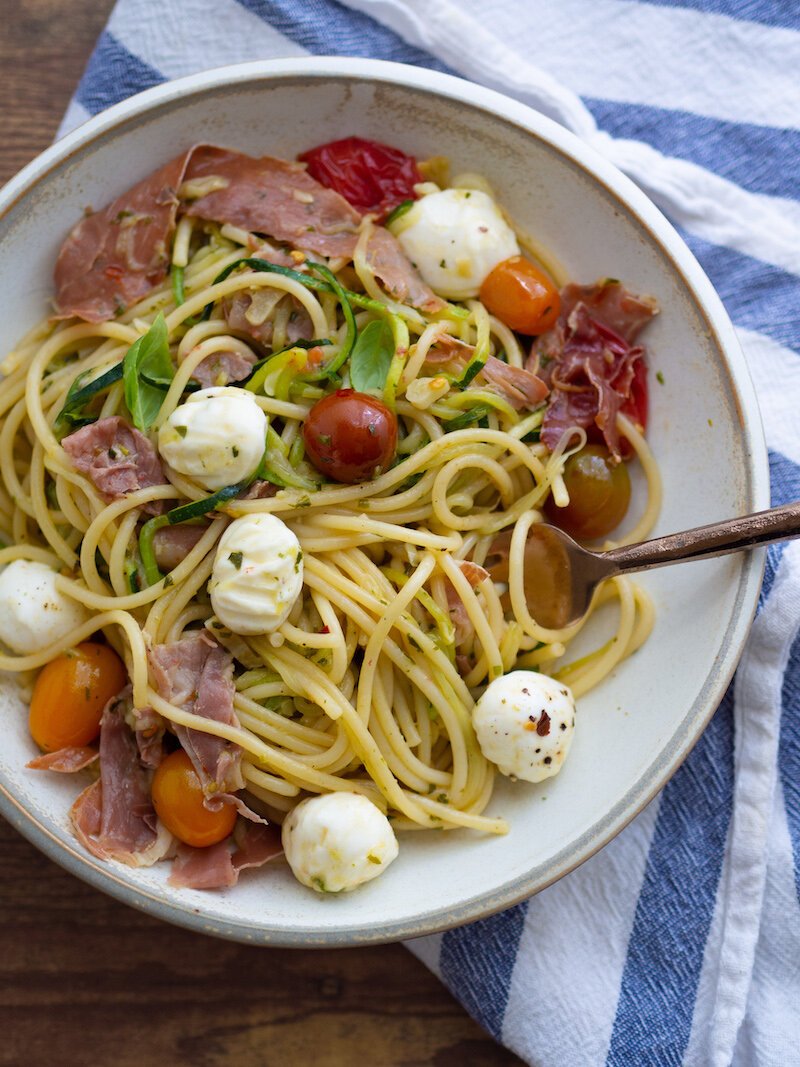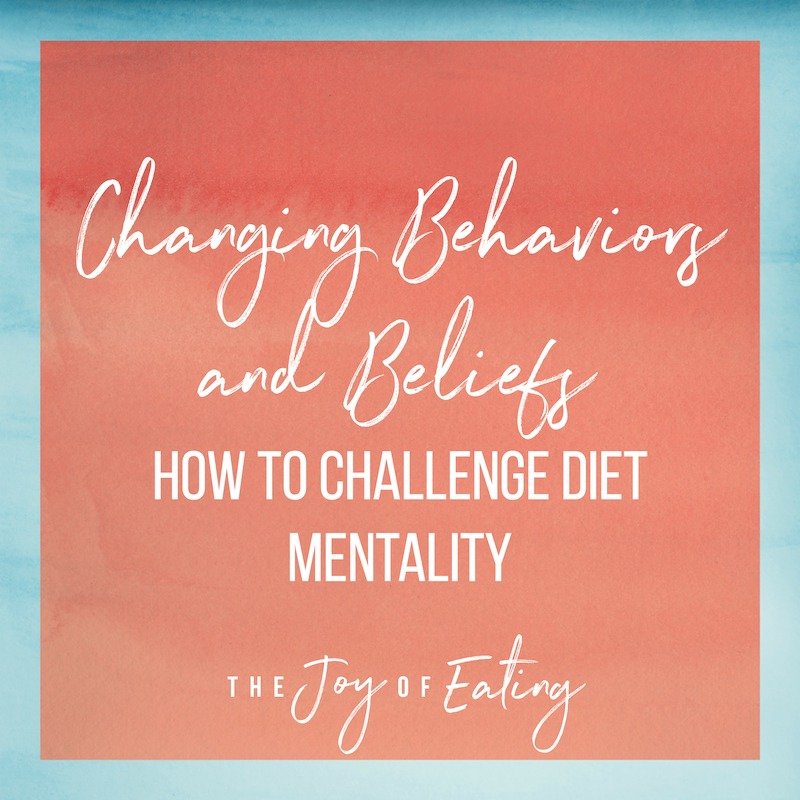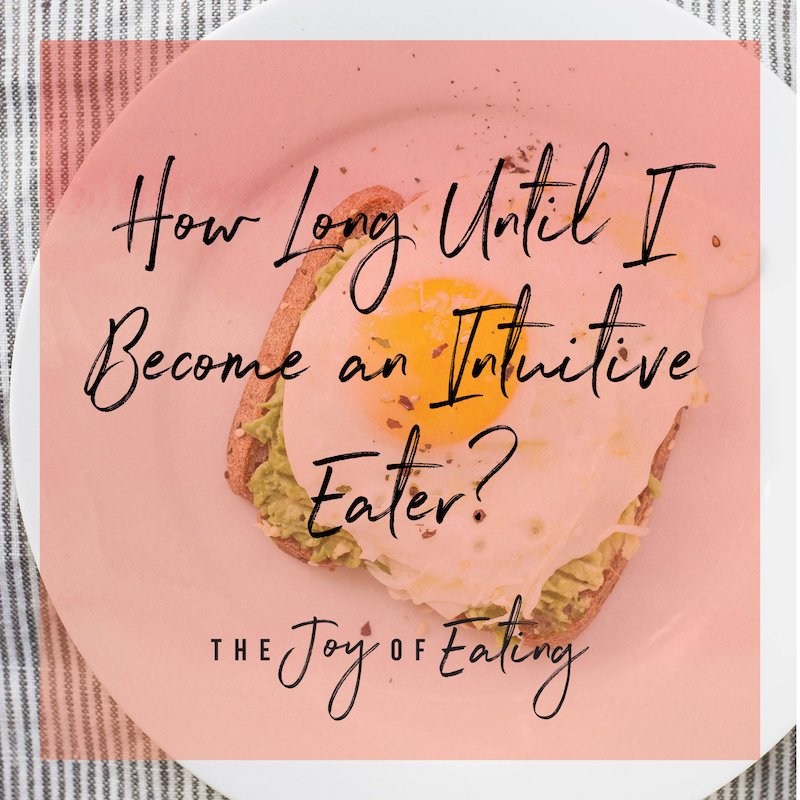Can I eat a diet food while practicing intuitive eating?
What happens if you like a food that’s a diet food? You might be wondering if you can eat a diet food while practicing intuitive eating. This post explores the nuance in that question so you can eat with confidence.
Hot take from your friendly IE RD.
Lean Cuisine’s chicken enchilada suiza is really good.
I know, I know. Lean Cuisine is a diet food. I mean, it’s in the name! But you know what? Their chicken enchilada suiza is super tasty. Granted, it’s not nearly enough food to be a meal. But as a satisfying snack or paired with a couple other foods to round it out, it’s pretty dope. When I lived in Columbia, the closest grocery store to my office had a crappy selection, so when time and convenience was my lunchtime priority, I would grab that Lean Cuisine meal, a cup of yogurt, and perhaps some fruit or chips and you know, it did the trick.
You may be reading this, scratching your head and wondering how a non-diet dietitian can get behind a diet food? Well, that’s because at the end of the day, “diet” food is usually just food.
A couple months ago, I had a conversation with a client where she labelled tofu as a diet food. We talked about how tofu has a long history as a cultural food in East and Southeast Asia. Often times foods get labelled as diet foods (or more annoyingly, superfoods) when they are just typical foods in other countries. Think of quinoa from Peru, sweet potatoes/yams in West Africa, or chia in Central America. Think of what it might be like to have one of your cultural foods labelled as a diet food, or co-opted by diet culture.
Can I eat a diet food while practicing intuitive eating?
This is a question I’m asked pretty frequently, although usually it’s phrased as some iteration of “but what if I actually want to order a salad? Does that mean I’m dieting?” Often times they feel silly asking the question, but I’ve seen people get really tripped up on these questions! What happens if you think you actually like cauliflower rice or banana “nice” cream or zoodles? Are these “diet” foods still allowed, or would choosing them be considered engaging in a dieting behavior? Am I choosing it because I like it, or because I’m subconsciously dieting? Does this mean I am not eating intuitively?
As you may have guessed, the answer isn’t clear cut. Yes friends, intuitive eating is all about nuance and that applies to this question as well.
In the world of intuitive eating, we talk a lot about making peace with food, but often the conversation centers around making peace with fear foods or foods that you consider “bad” or “unhealthy.” However making peace with food also means taking so called “good” or “healthy” foods off their pedestal. In intuitive eating, while foods certainly may have nutritional differences, there’s no good or bad - all foods serves a purpose, even if that purpose is simply to provide pleasure (an overlooked facet of health I might add).
When food is viewed completely neutrally, you can see that diet food is almost always just food. Zoodles and cauliflower rice are simply vegetables cut into a different shape. Banana “nice” cream is just another way to eat a banana - basically it’s a spoonable smoothie. And my chicken enchilada suiza is just an enchilada, albeit packaged in a much too small size for a meal. While there may be foods that you could never comprehend eating in a non-diet way, that doesn’t mean it couldn’t serve a different purpose for someone else. For example, I would never choose low fat or non-fat cheese, but for one of my clients who has fat malabsorption, it allows her to tolerate cheesy dishes she has always loved.
Rather than a food being a diet food, it’s how we use it that matters. For example, zoodles and cauliflower rice can be used in balanced meals instead of a substitute for carbs, as a different way to serve vegetables (ex: my summer spaghetti, which combines zoodles with regular spaghetti or the cauliflower fried rice in my book, which combines riced cauliflower with regular rice). Similarly, banana “nice” cream makes a lovely snack and while it is absolutely not the same as ice cream, it’s also really tasty and refreshing.
My aforementioned summer spaghetti with zoodles. As you can see, it doesn’t skimp on the pasta or use zoodles to cut carbs, but rather to add texture and enjoy zucchini cut in a different way.
So yes, you can eat foods that others might think of as “diet” foods when eating intuitively, however it is something you want to be thoughtful about. When you’re in that murky middle, working your way through viewing foods more neutrally, it might be hard to tell if you’re choosing a food as a dieting behavior or because you actually like it. How can you tell the difference? This is where getting curious about intention and impact comes in.
Another confession: I love green juice, kombucha, and all those silly, overly expensive wellness drinks and have a hard time going to the grocery store without picking up whichever new one’s packaging is calling my name. Most of them are super refreshing and delicious! However, used as a substitute for a meal, or worse, a cleanse, this would be a dieting behavior.
Intent and Impact
Examining your intention behind a food choice, and the impact of making a food choice, can help you tease apart whether you’re eating it as a dieting behavior or not. Here’s some questions you can ask yourself as you get curious about what’s driving your choice:
Intent: Get curious about your intention behind the food choice. Is it guided by fear and restriction? Or by self care or pleasure? Do you feel a sense of superiority for making this choice? Are you using this food to deny yourself what you actually want? Would you still make the food choice if you knew it would have no impact on your body size? Here’s some examples of possible intentions:
Pleasure/taste preferences
Convenience
Availability
Fear of health consequences
Fitting in with what others are eating
Nutrition
Curiosity/trying something new
Restriction
Medical needs
Taking care of food needs of other people you’re with
Tradition
Keep in mind that often times there’s more than one intention behind a food choice.
Impact: What is the impact of making this food choice? Would it result in you feeling deprived or restricted, physically or emotionally? Is this meal providing adequate nutrition?
Sushi was one sneaky way I realized I was engaging in a dieting behavior. Years after I started trying to eat more intuitively, I realized I would still buy brown rice sushi from the grocery store out of some vague sense that it was healthier. I told myself I liked it - and I do like brown rice, but definitely not in sushi! Once I realized it was a sneaky dieting behavior, I changed to regular rice, any my easy sushi meals are much tastier without the taste of brown rice overpowering the fish.
Here’s an example using aforementioned zoodles:
Non-Diet Intention: I saw a recipe for zoodles mixed with spaghetti and it looked really fun. I like zucchini, and I’ve never tried spiralized zucchini before, so I want to give it a try.
Dieting Intention: I feel like eating zoodles with my pasta is better for me. By eating zoodles mixed with spaghetti, I will hopefully eat less spaghetti and carbs at dinner.
Non-Diet Impact: By mixing zoodles with spaghetti, I am still getting a source of carbohydrate at my meal, and I am planning to eat as much pasta as I need to feel satisfied. My meal still contains carbohydrates, fat, and protein so I’m getting a balance of nutrients. Since zucchini is one of my favorite vegetables, I don’t feel deprived.
Dieting Impact: I plan on using a lot of zoodles and very little spaghetti. Because I am eating just a little spaghetti, it’s likely that this lower carb meal will not provide me with adequate energy, and will be unsatisfying.
Sometimes a food gets marketed or developed to go along with whatever diet is popular. For example, this snacking avocado (sent to me as a sample) is labelled as keto. Sometimes these snack foods are regular foods stamped with the seal of approval from whatever diet they naturally fall into (think pork rinds labelled as keto/paleo or potato chips marketed as gluten free). Sometimes these foods can be a fun way to get some variety in your snacking, as long as you’re including them in a balanced way. These avocados were actually really tasty, and I paired them with a mini-muffin for some carbs :)
The Bottom Line
At the end of the day, you get to decide the food you like. Other people might have thoughts and judgements about them, and that’s OK. Other people’s feelings about a food doesn’t have to define your choices. That said, be honest with yourself, because convincing yourself you like a food you think you should be eating isn’t hurting anyone but yourself.
Also, remember that eating intuitively is not an all or nothing thing. Perhaps after reading this you realize you’re still clinging to some dieting behaviors - it’s OK! That doesn’t mean you’re doing intuitive eating wrong. Learning to eat more intuitively often looks like slowly letting go of more and more dieting behaviors over time, not an all or nothing overnight shift. Approach this process with curiosity, self-compassion, and most of all patience.
If you’re looking for support on your intuitive eating journey, we work with clients throughout the US on intuitive eating coaching. Learn more about our practice philosophy here and reach out if you’d like to work together.










